Ultrasonic Pulse-Echo Signal Analysis for Damage Evaluation of Metallic Slit-Plate Hysteretic Dampers
Abstract
:1. Introduction
2. Description of the Hysteretic Dampers
3. Test Specimens, Experimental Setup and Loading Patterns
4. Pulse-Echo Ultrasonic Test
- Input signal detection. A threshold of 700 mV was established for picking the arrival time of the wave, designated as t0.
- Echo signal detection. The arrival of the echo signal was calculated as t = d/v; where time t is measured with respect to t0, d is the distance traveled by the wave along the thickness (twice) and v is the P-wave velocity in stainless steel extracted from literature. These values were respectively stated as 8 mm and 5.74 mm/μs. Thus, the output signal arrival time is 1.4 μs, which is in good agreement with experimental observations (Figure 8).
- Windowing of echo signal. A window from 1.5 μs to 1.7 μs was applied to the echo signal. Only this portion, called the main wave (MW) and shown in Figure 8 left, was used for the calculation of the damage index. Beyond 1.7 μs, the signal distorts due to the influence of attenuation, scattering, diffraction, reflections, etc.
5. Proposed Damage Index
6. Mechanical Damage Index ID
7. Results
7.1. Evaluation of the Mechanical Index of Damage ID
7.2. Results and Interpretation of UT Inspection
8. Conclusions
Acknowledgments
Author Contributions
Conflicts of Interest
References
- Benavent-Climent, A. An energy-based damage model for seismic response of steel structures. Earthq. Eng. Struct. Dyn. 2007, 36, 1049–1064. [Google Scholar] [CrossRef]
- Kouris, L.A.S.; Penna, A.; Magenes, G. Seismic damage diagnosis of a masonry building using short-term damping measurements. J. Sound Vib. 2017, 394, 366–391. [Google Scholar] [CrossRef]
- Romo, L. Diagnóstico de Daño en Disipadores de Energía Histeréticos Tipo Wpd Para el Control Pasivo en Estructuras Sismorresistentes Mediante Análisis de Vibraciones en el Dominio de la Frecuencia. Ph.D. Thesis, Universidad de Granada, Granada, Spain, May 2012. [Google Scholar]
- Benavent-Climent, A.; Gallego, A.; Romo-Melo, L.; Morillas, L. Health monitoring of web plastifying dampers subjected to cyclic loading through vibration tests. Struct. Health Monit. 2014, 13, 33–49. [Google Scholar] [CrossRef]
- Romo, L.; Benavent-Climent, A.; Morillas, L.; Escolano, D.; Gallego, A. Health monitoring of a new hysteretic damper subjected to earthquakes on a shaking table. Earthq. Struct. 2015, 8, 485–509. [Google Scholar] [CrossRef]
- Gallego, A.; Benavent-Climent, A.; Romo-Melo, L. Piezoelectric sensing and non-parametric statistical signal processing for health monitoring of hysteretic dampers used in seismic-resistant structures. Mech. Syst. Signal Proc. 2015, 60, 90–105. [Google Scholar] [CrossRef] [Green Version]
- Suarez, E.; Roldán, A.; Gallego, A.; Benavent-Climent, A. Entropy analysis for damage quantification of hysteretic dampers used as seismic protection of buildings. Appl. Sci. 2017, 7, 628. [Google Scholar] [CrossRef]
- Suarez, E.; Benavent-Climent, A.; Molina-Conde, R.; Gallego, A. Wavelet energy ratio index for health monitoring of hysteretic dampers. Struct. Control Health Monit. 2017. [Google Scholar] [CrossRef]
- Kurashkin, K.V.; Mishakin, V.V. Ultrasonic estimation of residual stresses. Inorg. Mater. 2013, 4, 54–58. [Google Scholar] [CrossRef]
- Ma, S.; Yuan, K.; Zhang, H.; Wei, X. Evaluation of fracture damage of SUS306 structural steel using ultrasonic testing. J. Shanghai Univ. 2009, 13, 279. [Google Scholar] [CrossRef]
- Benavent-Climent, A. A brace-type seismic damper based on yielding the walls of hollow structural sections. Eng. Struct. 2010, 32, 1113–1122. [Google Scholar] [CrossRef]
- Lempriere, B.M. Ultrasound and Elastic Waves: Frequently Asked Questions; Academic Press: Cambridge, UK, 2002. [Google Scholar]
- Krautkrämer, J.; Krautkrämer, H. Ultrasonic Testing of Materials, 3rd ed.; Springer: New York, NY, USA, 1983. [Google Scholar]
- Jones, N.; Watson, J.D. Digital Signal Processing: Principles, Devices and Applications; IEE Control Engineering Series; Institution of Engineering and Technology: London, UK, 1990; Volume 42, 424p. [Google Scholar]
- Young, I. Signal Processing, Theories and Applications; European Association for Signal Processing: The Hague, The Netherlands, 1986. [Google Scholar]
- De Araujo Freitas, V.L.; De Albuquerque, V.H.C.; De Macedo, S.E. Nondestructive characterization of microstructures and determination of elastic properties in plain carbon steel using ultrasonic measurements. Mater. Sci. Eng. A 2010, 527, 4431–4437. [Google Scholar] [CrossRef]
- Augereau, F.; Portal, A. Detection of small stress relaxation in tightened metallic structures by ultrasounds. Phys. Procedia 2015, 70, 471–475. [Google Scholar] [CrossRef]
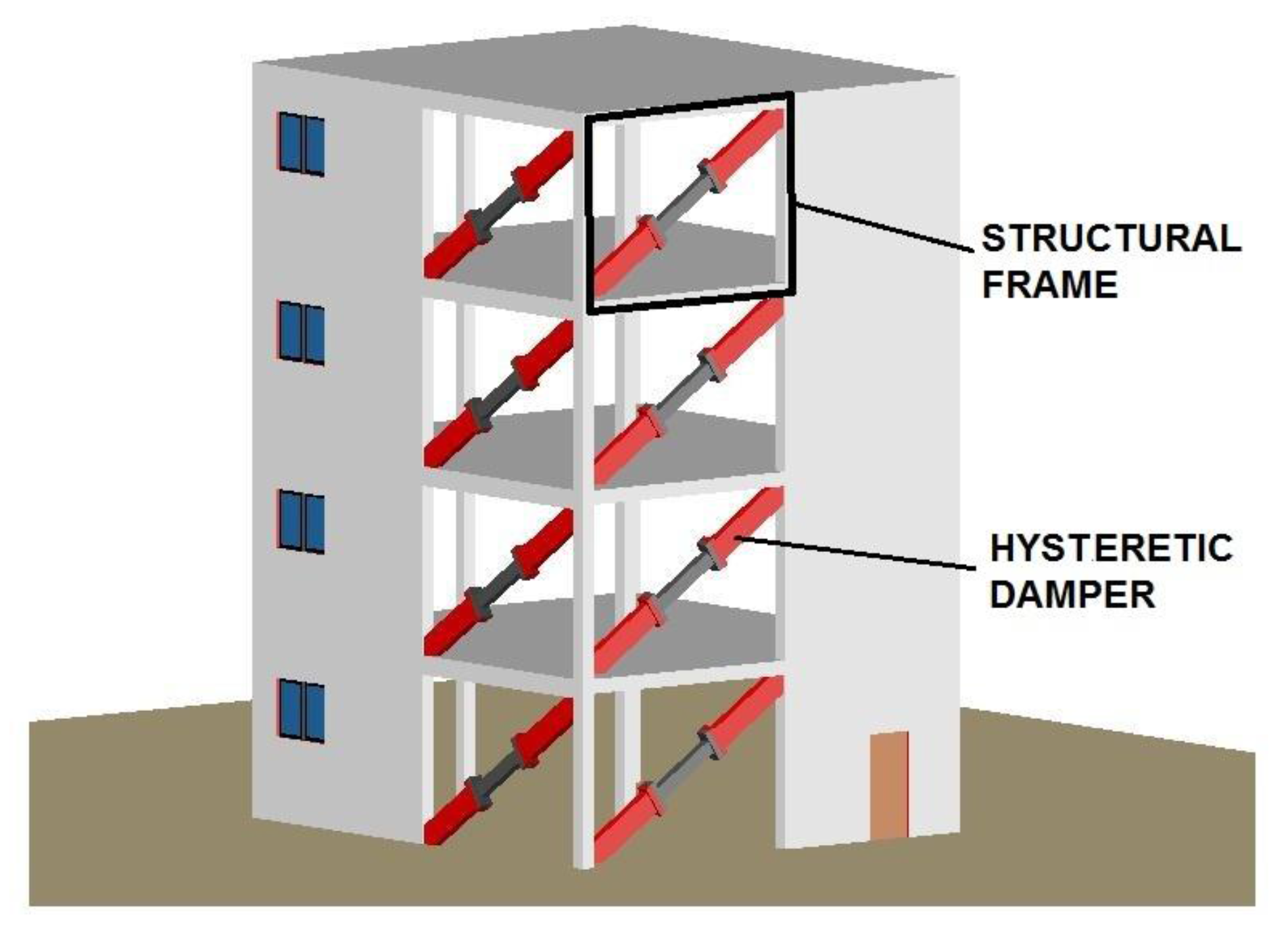


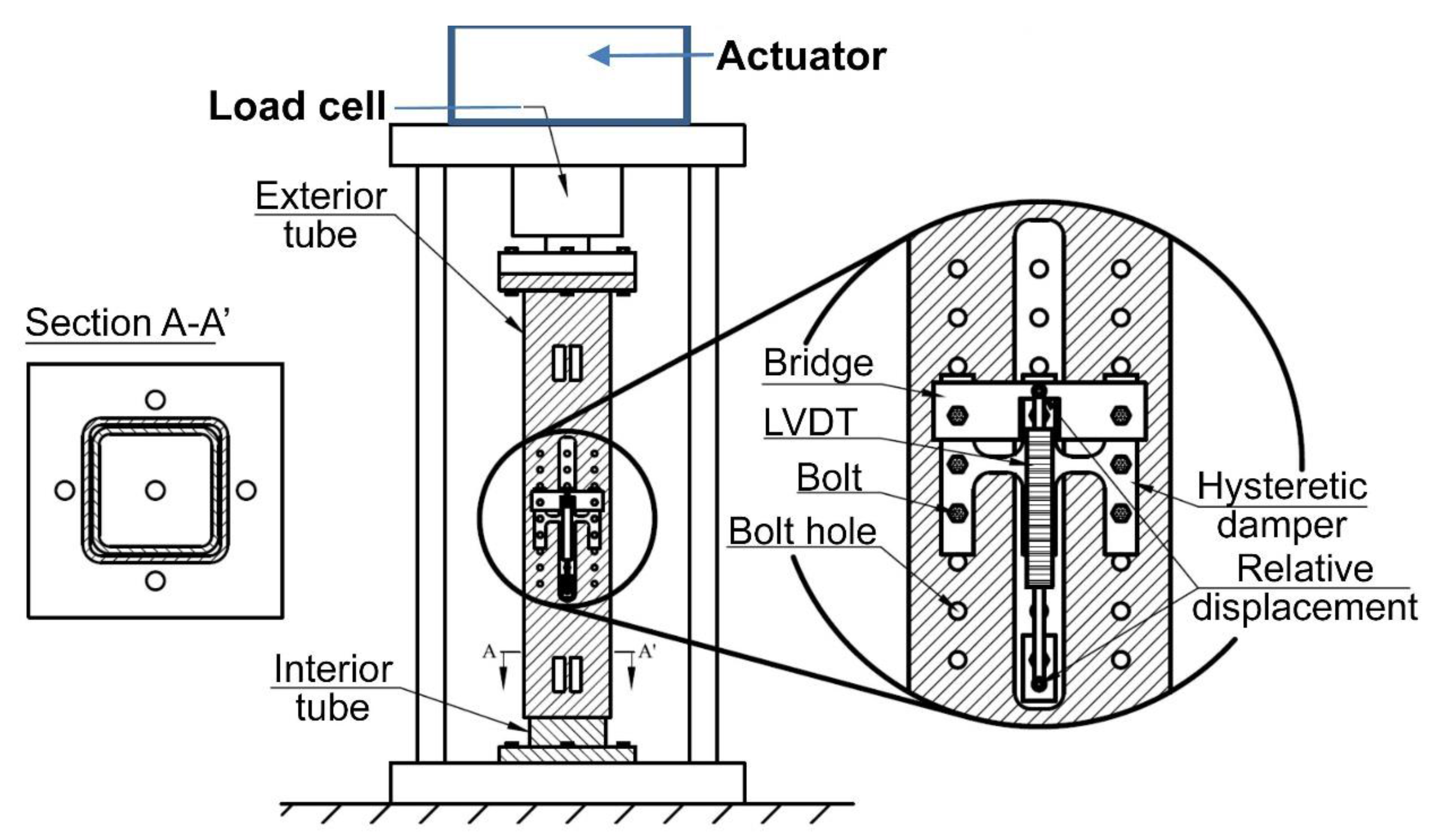



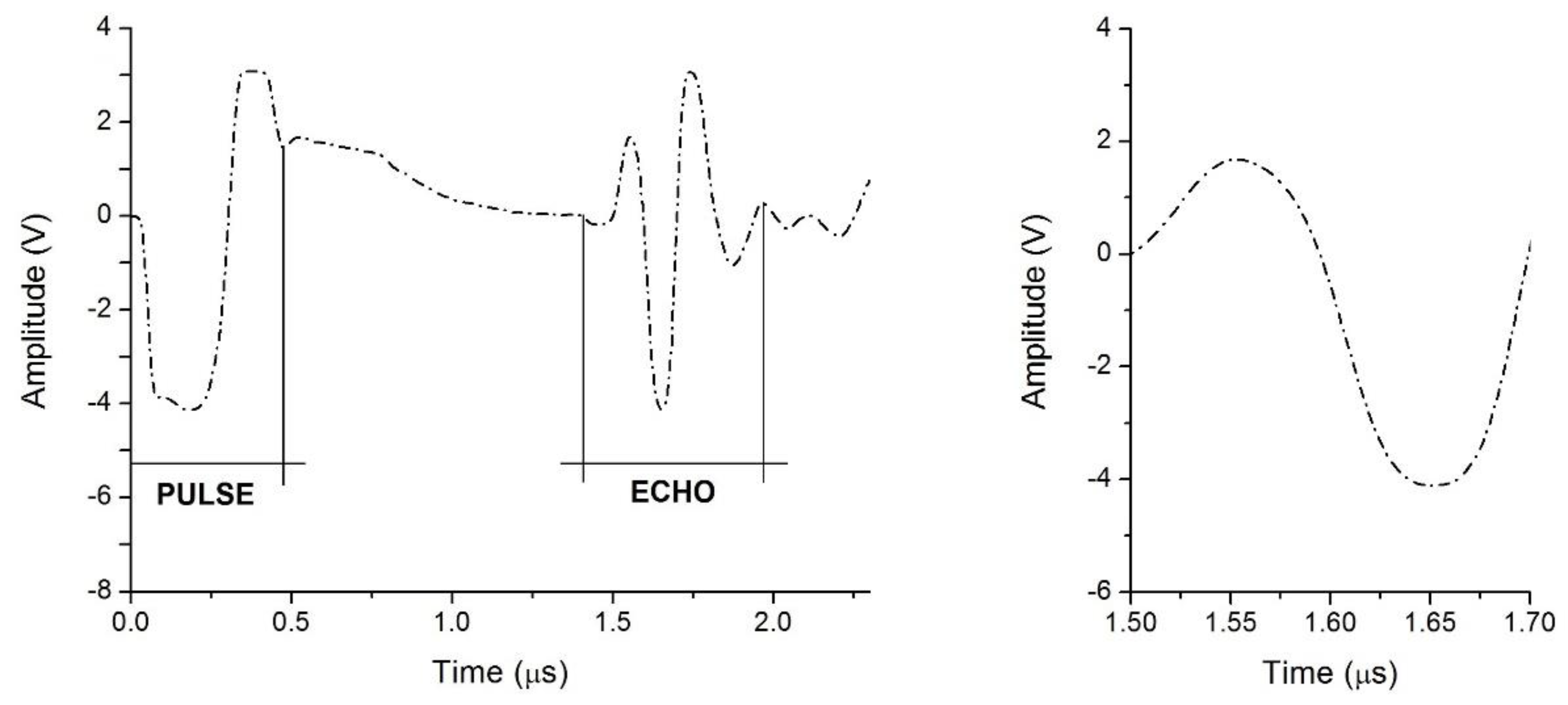
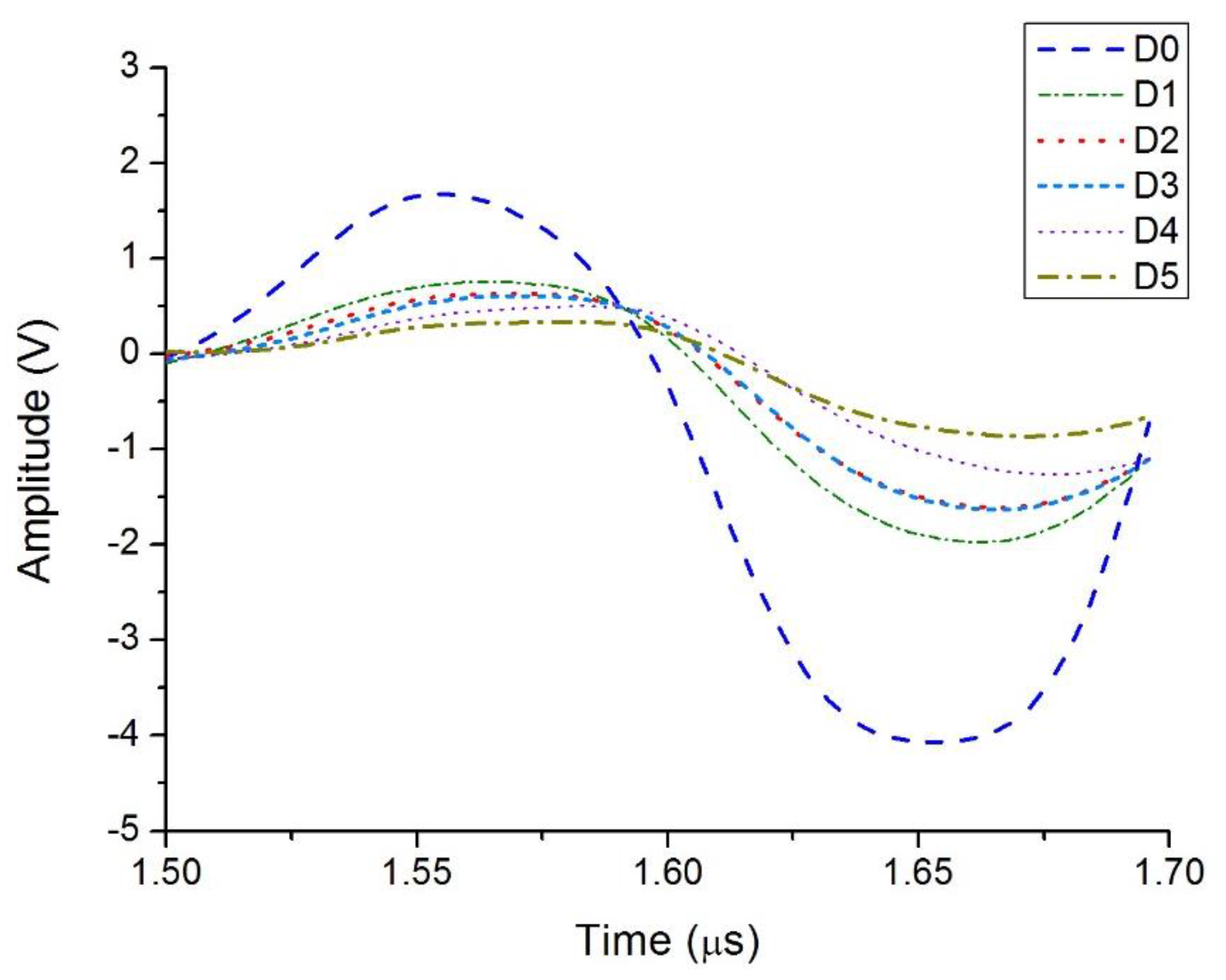



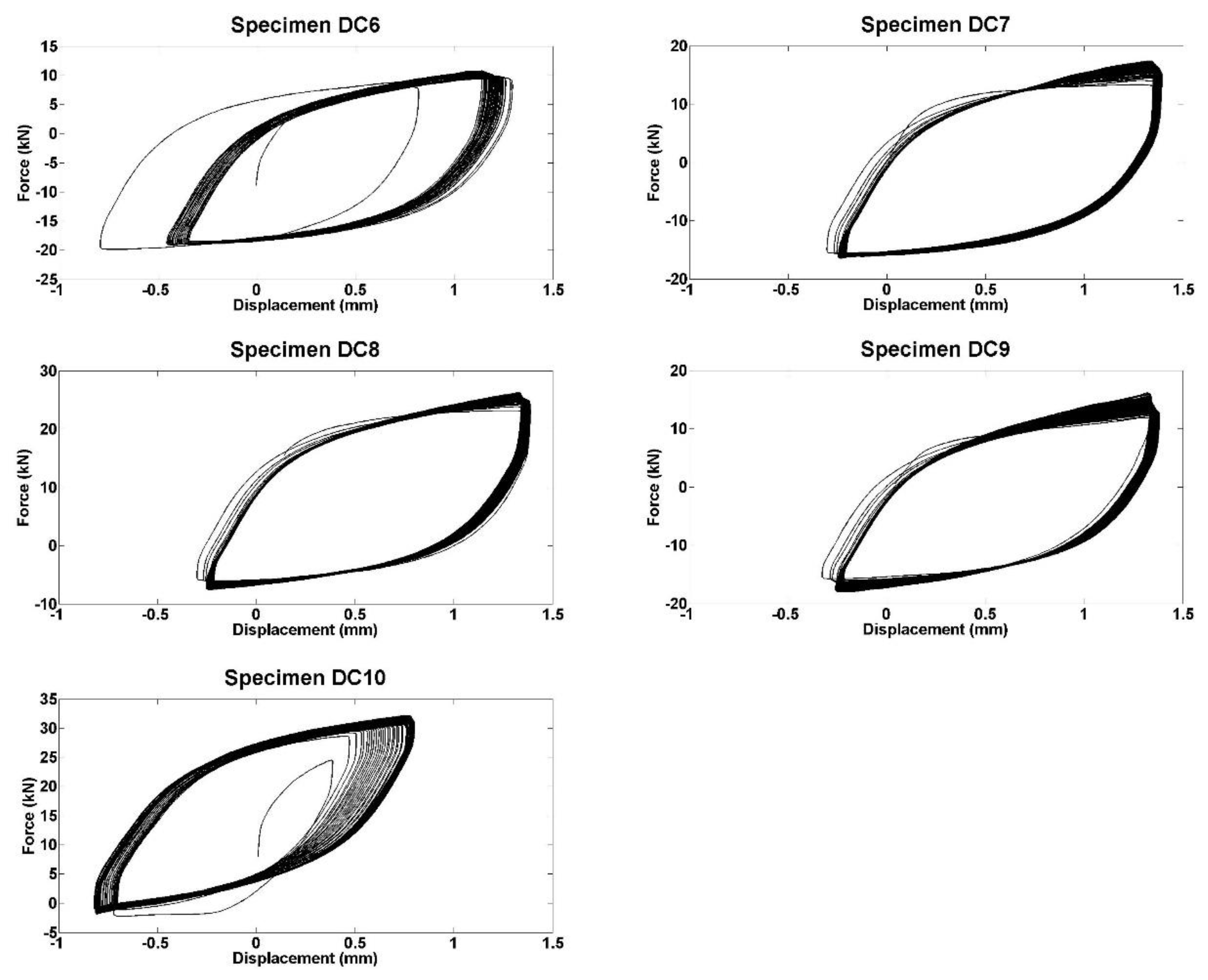
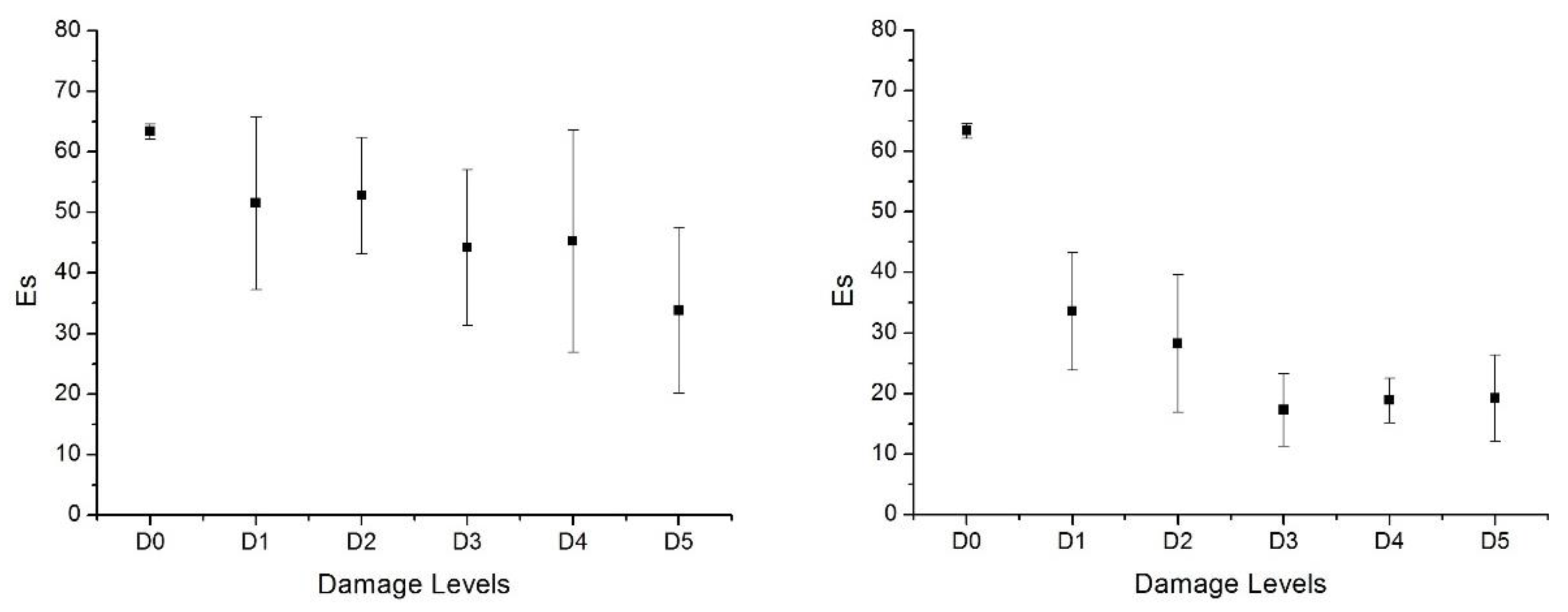
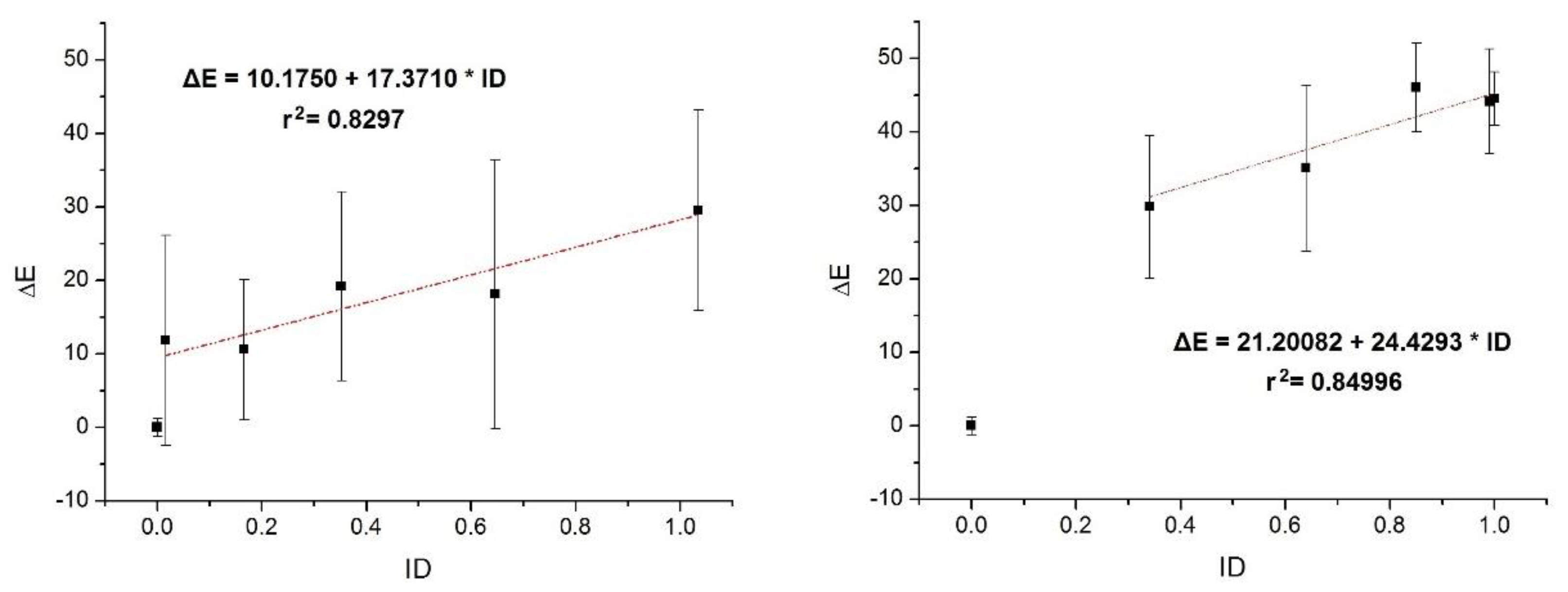
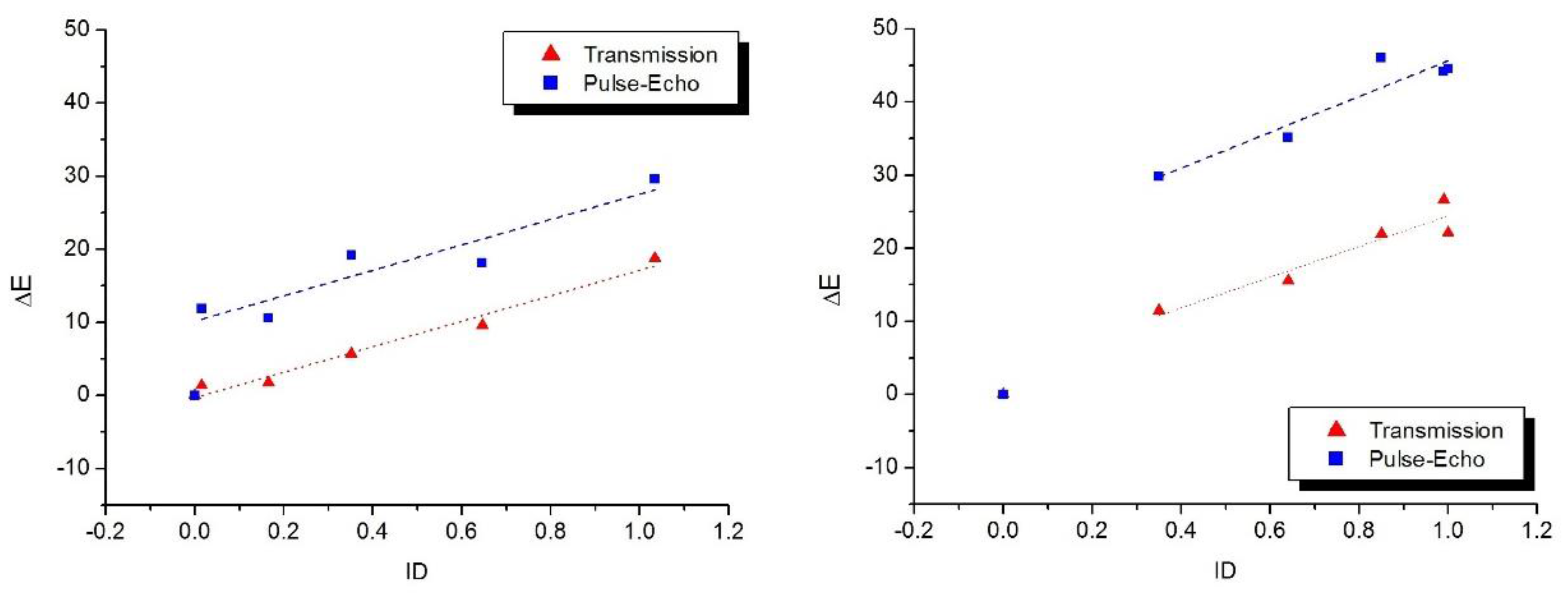
| Number of Cycles | 1 | 2 | 3 | 4 | 5 | 6 | 7 | 8 | 9 | 10 | 11 | 12 | 13 |
|---|---|---|---|---|---|---|---|---|---|---|---|---|---|
| Maximum displacement (mm) | 0.4 | 0.8 | 1.2 | 1.6 | 2 | 2.4 | 2.8 | 3.2 | 3.6 | 4 | 4.4 | 4.8 | 5.2 |
| DC1 (D1) | X | X | |||||||||||
| DC2 (D2) | X | X | X | X | X | X | |||||||
| DC3 (D3) | X | X | X | X | X | X | X | X | |||||
| DC4 (D4) | X | X | X | X | X | X | X | X | X | X | |||
| DC5 (D5) | X | X | X | X | X | X | X | X | X | X | X | X | X |
| Number of Cycles | 30 | 60 | 90 | 120 | 150 |
|---|---|---|---|---|---|
| Maximum displacement (mm) | 0.8 | 0.8 | 0.8 | 0.8 | 0.8 |
| DC6 (D1) | X | ||||
| DC7 (D2) | X | X | |||
| DC8 (D3) | X | X | X | ||
| DC9 (D4) | X | X | X | X | |
| DC10 (D5) | X | X | X | X | X |
| Specimen | DC1 | DC2 | DC3 | DC4 | DC5 | DC6 | DC7 | DC8 | DC9 | DC10 |
| Damage Level | D1 | D2 | D3 | D4 | D5 | D1 | D2 | D3 | D4 | D5 |
| ID Index | 0.016 | 0.166 | 0.352 | 0.646 | 1.034 | 0.34 | 0.64 | 0.85 | 0.99 | 1.00 |
© 2017 by the authors. Licensee MDPI, Basel, Switzerland. This article is an open access article distributed under the terms and conditions of the Creative Commons Attribution (CC BY) license (http://creativecommons.org/licenses/by/4.0/).
Share and Cite
Abarkane, C.; Galé-Lamuela, D.; Benavent-Climent, A.; Suárez, E.; Gallego, A. Ultrasonic Pulse-Echo Signal Analysis for Damage Evaluation of Metallic Slit-Plate Hysteretic Dampers. Metals 2017, 7, 526. https://doi.org/10.3390/met7120526
Abarkane C, Galé-Lamuela D, Benavent-Climent A, Suárez E, Gallego A. Ultrasonic Pulse-Echo Signal Analysis for Damage Evaluation of Metallic Slit-Plate Hysteretic Dampers. Metals. 2017; 7(12):526. https://doi.org/10.3390/met7120526
Chicago/Turabian StyleAbarkane, Chihab, David Galé-Lamuela, Amadeo Benavent-Climent, Elisabet Suárez, and Antolino Gallego. 2017. "Ultrasonic Pulse-Echo Signal Analysis for Damage Evaluation of Metallic Slit-Plate Hysteretic Dampers" Metals 7, no. 12: 526. https://doi.org/10.3390/met7120526





